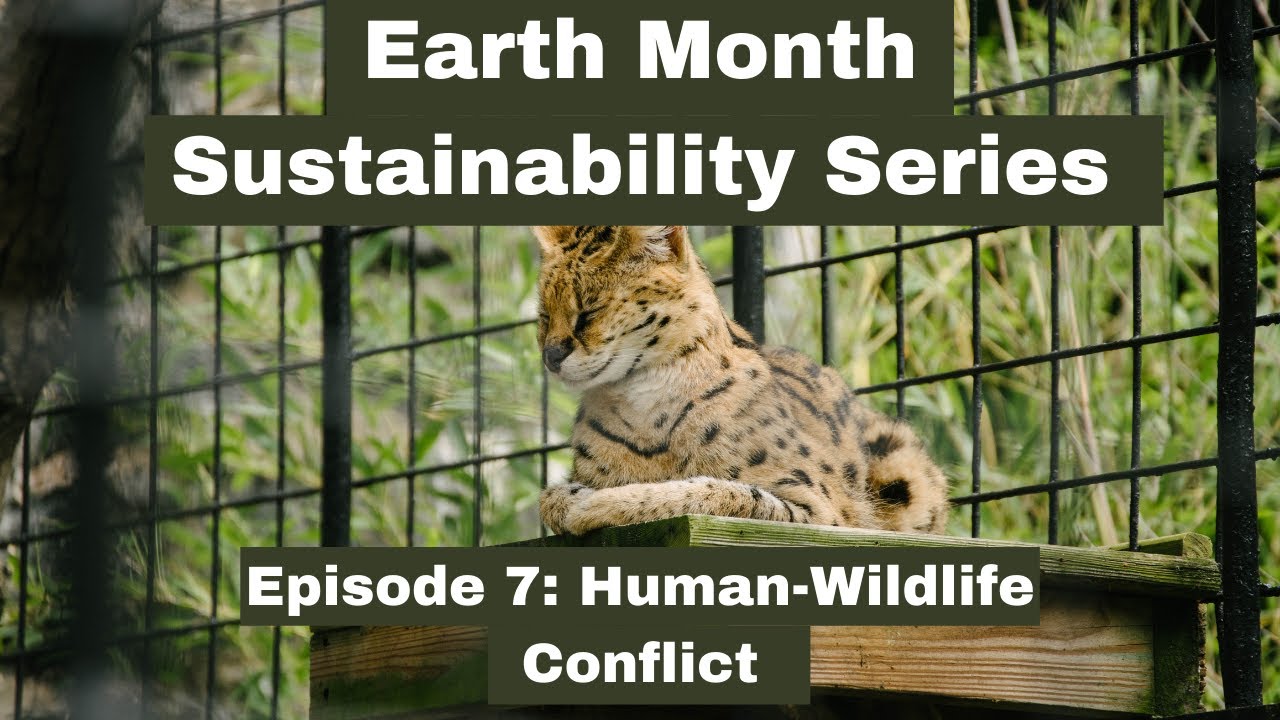Episode 7: Human-Wildlife Conflict and Our Journey towards Sustainability
Summary:
1. The growing human population and the encroachment of wildlife habitats lead to increased human-wildlife conflict.
2. Understanding the causes and impacts of human-wildlife conflict is crucial in finding creative solutions.
3. Implementing effective measures like habitat conservation, community engagement, and technological innovations can help reduce human-wildlife conflict.
4. Education and awareness play a significant role in fostering coexistence and promoting sustainable practices.
5. By working together, we can create a harmonious balance between humans and wildlife, ensuring the safety and well-being of both.
Welcome back to the Earth Month Sustainability Series for episode 7! In today’s article, we’ll explore the unique and fascinating aspects of human-wildlife conflict, shedding light on its challenges and the innovative approaches we can take to minimize its occurrence. As our population continues to rise, finding ways to coexist peacefully with wildlife and protect the delicate balance of our ecosystems becomes increasingly essential.
Human-wildlife conflict arises when our growing population infringes upon animals’ natural habitats, forcing them closer to human settlements. The competition for resources and space often leads to encounters that can harm humans and wildlife. By understanding the causes and impacts of this conflict, we can work towards viable solutions that prioritize the safety and well-being of all involved.
One of the key factors contributing to human-wildlife conflict is habitat loss. As urbanization expands and agricultural activities encroach upon wildlife territories, animals are left with limited options for survival. This scarcity of resources drives them towards human-populated areas in search of food, water, or shelter. While these creatures follow their instinctual behaviors, this interaction with humans can have detrimental consequences.
Another aspect that exacerbates human-wildlife conflict is the illegal wildlife trade. The demand for exotic pets, traditional medicines, and animal products drives poaching and illegal hunting, further threatening ecosystems’ stability and jeopardizing numerous species’ survival. Effective law enforcement and community awareness and support are vital in addressing this issue and curbing the illegal wildlife trade.
Now, let’s delve into some inspiring and creative solutions that can help reduce human-wildlife conflict. Conservation organizations and local communities are joining forces to implement innovative measures that foster coexistence. Habitat conservation is crucial in providing safe spaces for wildlife, allowing them to thrive without needing to venture into human settlements.
Furthermore, community engagement is essential in ensuring that local people value and support wildlife conservation efforts. By involving communities in decision-making processes and providing alternative livelihood opportunities, we can create a sense of ownership and encourage active participation in protecting wildlife and their habitats.
Technological advancements also offer exciting possibilities for reducing human-wildlife conflict. For instance, developing early warning systems equipped with motion sensors and noise detectors can alert communities to the presence of wildlife, giving them time to take necessary precautions. Similarly, using drones to monitor vulnerable areas can provide valuable data on animal movements and help prioritize conservation efforts.
Education and awareness are crucial in nurturing a culture of environmental stewardship. By teaching children and adults about the importance of wildlife conservation and their role in safeguarding our natural heritage, we empower individuals to positively impact their surroundings. Engaging educational programs, nature documentaries, and interactive exhibits can inspire empathy and foster a love for nature and its inhabitants.
In conclusion, human-wildlife conflict poses significant challenges in our journey toward sustainability. However, we can ensure a harmonious coexistence between humans and wildlife by implementing effective measures such as habitat conservation, community engagement, and technological innovations. Education and awareness are paramount in instilling a sense of environmental responsibility. Together, we can create a future where humans and wildlife thrive side by side, nurturing the delicate balance of our interconnected ecosystems. Let’s embrace the opportunity to make a difference and safeguard our planet for future generations! Remember, we are all in this together.
*****
Source Description
Welcome back to the Earth Month Sustainability Series for episode 7! Today we’ll learn what problems can arise when our increasing population lives ever closer to animals. We can find creative ways to reduce human-wildlife conflict and keep humans and animals safe. Suppose you are an educator or are watching with learners. In that case, you can buy research activities for every episode of the series, plus eligibility to enter the Earth Month Sustainability Challenge to win a free virtual animal encounter! All activities plus eligibility for the challenge costs just $10! Register at https://brandywinezoo.org/learn/zoo-school/#special_events


